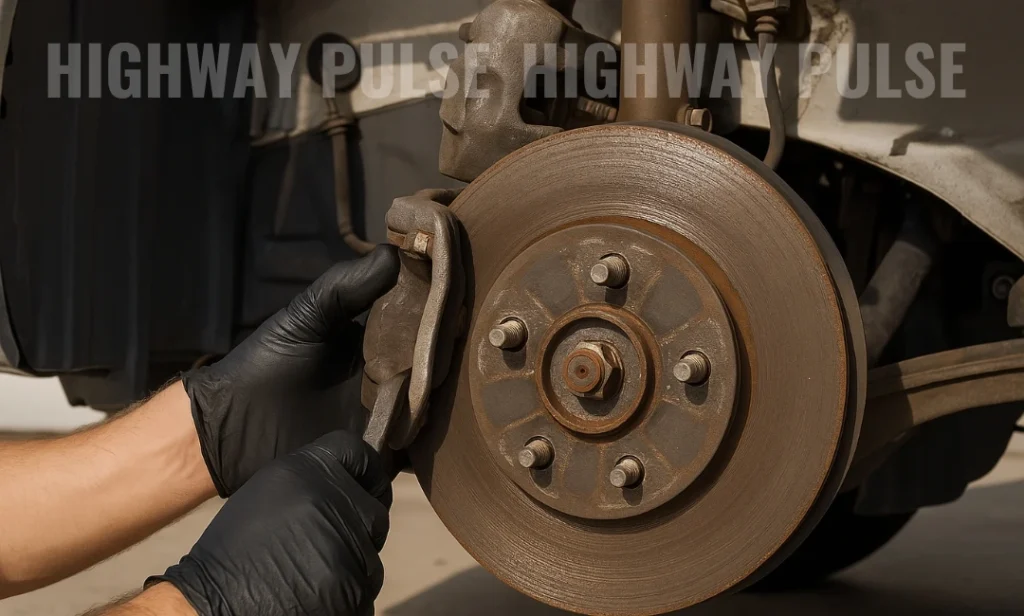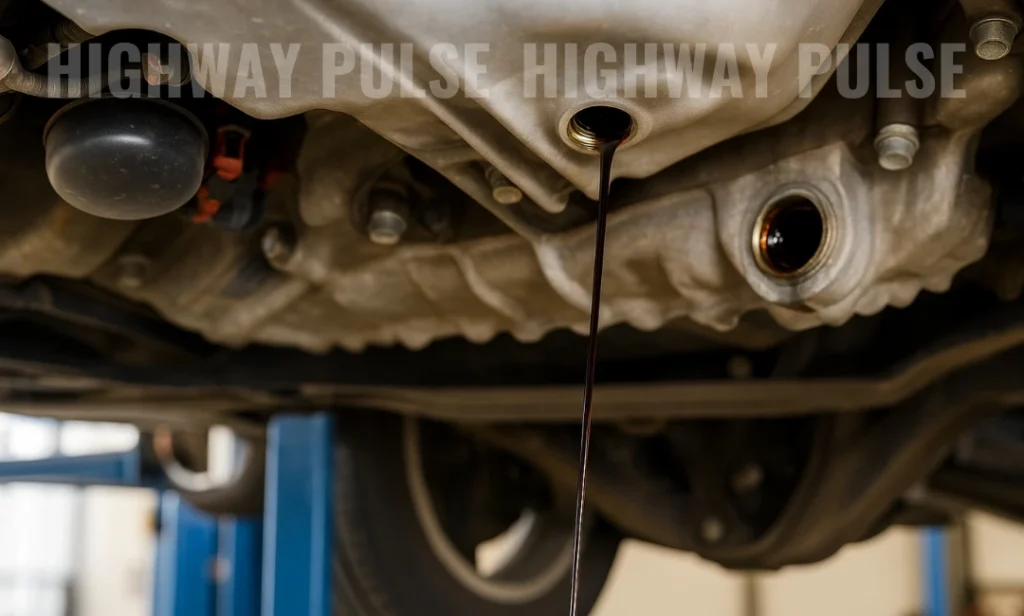If you own a Honda and see a B13 service code pop up on your dashboard, do not avoid it. It is a warning sign telling you that your ride is due for critical maintenance and you should get on with it as soon as possible.
The B13 service is part of Honda vehicles’ Maintenance Minder system, a small technology that monitors the engine performance, mileage, and even your driving habits to let you know exactly which service is required by your ride and when.
Honda Maintenance Minder System
Honda introduced its maintenance minder system in many vehicles starting in the mid-1990s, making it easier for its customers to keep track of their regular maintenance tasks. Popular sedans and SUV models such as Accord, Civic, Pilot, Fit, Odyssey, and CR-V are well-known for incorporating this system, meaning drivers of these cars may encounter the B13 code as a part of their routine car care schedule.
What’s interesting about this service reminder system of Honda is that it categorizes services into two sections (similar to Mercedes-Benz A3 Service) Main and Sub. The Main services are further categorized by designation A or B, whereas the sub-services (including oil change, tire rotation, fluid change, replacing parts, and more) are categorized by numbers from 1 to 6.
Thus, you can see that the B13 code is not just a random variable. It is a combination of a main code (B) and sub-codes (1 and 3). Each part of this code represents a particular type of maintenance necessary to keep your Honda running smoothly and safely.
What Does Honda B13 Service Code Mean?
The B13 service falls under the comprehensive main service B. It comprises one letter and two numbers: B, 1, and 3, signaling a combination of services. To help you understand better, below we have decoded in detail what each letter and number in this service code means:
B = Oil & Filter Change + More
This letter means that you need to replace the engine oil and filter, inspect the brakes both front and rear, check the fluid levels, and their condition, replace if required, inspect the steering, suspension, and drive components, and finally check the exhaust system and fuel lines.
1 = Tire Rotation
Number 1 suggests that you need to rotate your tires to ensure even tread wear, thoroughly inspect the tire condition and tread depth, and adjust the tire pressure as needed.
3 = Transmission Fluid Replacement
The number 3 indicates that it is time for the replacement of automatic transmission fluid (ATF) or continuous variable transmission fluid (CVT-F), whichever is present in your ride.
Why Is The B13 Service So Important?

As a fellow car owner, I can understand what it feels like to be unable to maintain the constant flow of your car maintenance. You do not need to get all tense if you get back to your maintenance tasks a day or a week later as some services can wait that long.
However, the B13 is not one of them. The pop-up of this code on your dash is a sign of worry as it indicates issues with either the engine, brakes, tires, or transmission. Thus, you should not delay it.
Following this clever Honda maintenance code can help you in many ways:
Engine Oil & Filter: It reminds you to check and change your engine oil. Old oil breaks down over time and becomes ineffective in lubricating the engine parts, which can lead to overheating and long-term engine damage.
Brake Inspection: Faulty brakes are a major safety risk. If not handled in time it can lead to severe consequences. However, the B13 code helps you catch the wear early and prevent costly repairs.
Tire Rotation: Tire rotation is necessary to avoid any damage to the wheels and ensure proper balance of the vehicle. Reminding of this task which most car owners tend to ignore not only helps you extend the life of your tires but also boosts the fuel efficiency of your ride. This is one of the many tricks to save money in times of rising gas prices.
Transmission Fluid: Running your ride on low or dirty fluids can hinder the smooth functioning of your gearbox. But getting a regular reminder to check and change it ensures smooth shifting operation and even prolonged life of your gearbox.
Suggestions: 2025 Easter Jeep Safari Leads To Rolling Out Of 7 Innovative Off-Road Concepts
How Often Should You Get the B13 Service?

Generally, the B13 service code of the Honda maintenance minder system appears around 30,000 to 60,000 miles. However, this is not the case for every car as your driving habits, driving conditions, and how you keep your ride can change this window.
If you do a lot of stop-and-go driving, carry heavy loads regularly, drive in extreme temperatures, or do not take proper care of your car, you may see this code sooner.
However, if you want to be one step ahead and wish the code does not appear before the suggested window of the automaker, we recommend you follow the following guidelines that Honda has for its customers:
- B Service (oil + inspection): Perform all the tasks under B service (engine oil & filter change and inspection of brake fluid levels, steering, suspension, exhaust system, and more) every 5,000 to 7,500 miles.
- 1 Service (tire rotation): Have your car tires rotated every 6,000 to 8,000 miles.
- 3 Service (transmission fluid): Replace the transmission fluid every 30,000 to 60,000 miles.
What Is The Average Cost of Honda B13 Service
There is no fixed price for this particular Honda service. The cost can vary depending on your location, the condition of your vehicle, and the service center you choose to get the tasks done. However, if we consider the country average, here is what you can expect in your B13 service appointment:
| Service | Estimated Cost |
| Oil & Filter Change | $40 – $80 |
| Tire Rotation | $20 – $50 |
| Transmission Fluid Replacement | $100 – $250 |
| Total Estimated Cost | $160 – $380 |
If you wish to save money on your car repair tasks, some auto dealerships or auto repair shops offer maintenance bundles or Honda Care plans that include B13 and other services at a discounted rate. So, next time you visit one, instead of getting individual services, you can bundle them up and save money.
Different Cost-Building Factors in Honda B13 Servicing
The average cost for the Honda B13 service ranges from $160 to $380. However, this price is not fixed as several other factors at play can add to the final cost of your car care.
- Professional or DIY: If you are a mechanical wiz who has all the necessary tools and is capable of performing all the B13 tasks you have nothing extra to pay other than fluids and parts. However, if you choose professional service, you will have to pay labor rates which vary widely depending on where you live and the expertise of the service center.
- Additional Service: If your ride requires more services than the one in the B13 code, you will have to pay extra for them.
- Quality Of Parts: If any component of your vehicle needs replacement it will cost you more than fixing it. Genuine Honda parts are typically costly but offer better durability. Aftermarket parts are cheaper but you can not guarantee their reliability.
- Frequency Of Service: Regular maintenance may sound hectic to many but doing it can help prevent costly repairs down the road. If you invest in proper driving and car care habits, it will result in lower long-term expenses.
All these factors are always fluctuating, thus, you can never know exactly how much additional cost you will get to your bill. But you can avoid it by balancing BIY approaches with occasional professional maintenance to keep your ride in good condition without overspending.
Can You Do a B13 Service Yourself?
Whether you can or can not do a B13 yourself depends on your wants and skills. Some parts of this service like an oil change or tire rotation, can be done at home if you’re confident in your mechanical skills. However, tasks like transmission fluid replacement are more complex and should be left to certified technicians, especially if you own a CVT model.
How To Fix a Honda B13 Service Code?

If you are someone who has sufficient knowledge of cars, especially the Honda model you own, and is pretty handy and experienced with car-related tasks, you can perform all the tasks associated with the Honda service B13 code yourself. All you need to do is follow a systematic process and do as guided. Below we have a comprehensive guide that outlines the steps to resolve your B13 service code.
Diagnose The Components
This particular service is associated with the engine, tires, and transmission of your car. You need to change the engine oil, replace the engine oil filter, replace the transmission fluid, inspect other fluids like brakes, steering, etc., and replace them accordingly and rotate the tires.
Thus, inspect the engine, brakes, transmission, and tires of your car thoroughly. Learning about these components will help you identify which part needs what work, saving you the hassle. You can either refer to your car’s owner’s manual or visit an authorized Honda service center to confirm what is needed by your specific model.
Gather the Required Tools and Materials
Once you know which particular parts you need to focus on for the B13 service, the next step is to gather all the necessary tools to perform the tasks.
For oil and filter change you will require engine oil (ensure it meets Honda’s specifications), an oil filter, and a wrench set whereas for tire rotation you will need a jack, jack stands, lug wrench, and a tire pressure gauge. Finally, for transmission fluid replacement you will be required to have the correct type and quantity of transmission fluid, a drain pan, and appropriate wrenches, and tools to remove the transmission fluid drain plug (if applicable).
We recommend using high-quality parts and fluids as they ensure long-lasting performance.
Perform the Maintenance Tasks
Once you have located the region of the problem and gathered all the necessary tools, it is time to perform the care task.
Engine Oil & Filter Change
Start by warming up your engine as it will heat the oil making it easy to drain it. Shut the engine and then raise and secure your vehicle using jack and jack stands. Ask for someone’s help for safe securing. Once the vehicle is raised, drain the old oil by removing the oil drain plug and replacing the plug again. Now remove the old oil filter and install a new one. To avoid mistakes follow the manufacturer’s torque specifications. Now all you need to do is refill the engine with the recommended amount and type of oil.
Tire Rotation
Use the jack to lift the car and jack stands to safely secure it. Remove all the wheels carefully using a lug wrench. Now rotate the tires according to the Honda’s recommended pattern. You can refer to your owner’s manual to know about your vehicle’s pattern.
The next step would be to reinstall the tires. Although not mandatory, if you tighten the lug nuts in a star pattern, it ensures even pressure. Lastly, take the vehicle down from the jack stands, and check and adjust the tires’ pressure as per the manufacturer’s guidelines.
Transmission Fluid Replacement
For this task, you first need to locate the transmission drain plug. You can either check it online or follow what’s mentioned in your car guide. Once located, drain the old fluid to its last drop into a catch pan and make sure you dispose of it responsibly.
Now, replace the drain plug and refill it with the new fluid to the manufacturer’s recommended levels to ensure proper operation. If you own a Honda CVT, there may be some specific guidelines for your model’s transmission system. Make sure you go through them before beginning this task.
Reset the Maintenance Minder
Once you have finished all the maintenance tasks associated with the B13 code, it is time to reset the Honda Maintenance Minder system. To do so, first, turn on the ignition without starting the engine. Now press the “SEL/RESET” button (or follow your owner’s manual instructions) until you see the maintenance menu. Hold the button until the maintenance code resets or disappears. Start the engine to know whether the code has been cleared or not.
Verify and Monitor
After you have completed the service, it is wise to double-check your work. Start doing so by ensuring all the fluid plugs are tightened, fluids are at desired levels, and there are no leaks. Your work does not end here. Over the next few of your drives keep an eye on the Maintenance Minder. If the code reappears, it indicates that there is an issue that may require another look. If the code does not go away even after your oversight, it is better to seek professional assistance.
When to Seek Professional Help
You should always turn to trained professionals if you are not confident or comfortable with performing any of these care steps. A certified Honda technician can handle all the tasks for you and ensure you get a ride with no B13 code in sight. You can finally drive in peace and calm.
Easy-To-Follow Tips to Extend the Time Between B13 Services
If you want to get more out of your vehicle fluids and components, we recommend you follow the tips we have here:
- Use high-quality engine oil (preferably synthetic).
- Keep your car tires properly inflated and aligned.
- Adopt gentle driving practices and avoid sudden acceleration or hard braking.
- Check fluid levels regularly, especially during long trips.
FAQs
Is B13 service necessary if my car is running fine?
You must perform this service on your Honda even if it is running well because it will help in diagnosing any underlying issues and handling them before they can turn worse and harm your ride in the worst way possible.
Will ignoring the B13 service void my warranty?
There are high chance that ignoring the manufacturer’s recommended services can do such a thing. Most warranties require proof of regular maintenance if you want to avail them. So if you skip them they can affect your coverage.
How long does a B13 service take?
It generally takes 1.5 to 2.5 hours to get the B13 service done. However, the time can vary depending on the service center and wait times.
Final Thoughts
The Honda B13 service is more than just routine maintenance. It is your vehicle’s health checkup. By keeping up with B13 service intervals, you’ll not only extend the life of your ride but also avoid unexpected (and costly) repairs down the line.
So the next time you see this Honda code light up on your dashboard, don’t panic. Either pick a day to perform all the related tasks yourself or just schedule your service with a professional and keep your Honda running like new.




